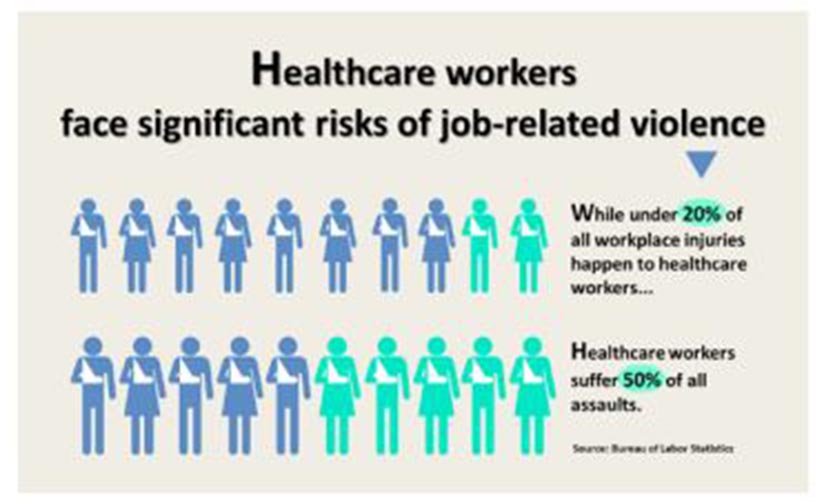Awareness & Prevention
Workplace violence has quickly become a growing concern for employees across America – with good reason, given recent incidents and published statistics.
As many as two million workers report having experienced workplace violence each year according to BLS within their Census of Fatal Occupational Injuries; of the 4547 fatal workplace injuries reported in 2010, 506 of them were workplace homicides.
Unfortunately, our society is unforgivingly reactive. Most companies only react to incidents that get a lot of publicity, and even then many do not act. The preventative aspect is missing. To that effect, below is the recent trend of visitors to our Workplace Violence Awareness & Prevention Training page. As you can see the recent incidents this week have sky-rocketed our visitors.
The Occupational Safety and Health Administration, and the FBI publish pamphlets and PSA’s concerning the issue, and the BLS published statistics regarding Workplace violence as well.
Workplace violence is a complex and widespread issue, and rightfully so has received increased attention from the public, mental health experts, and law enforcement professionals due to its complexity. The wide range of acts that fall under this rubric include all violent behavior and threats of violence, as well as any conduct that can result in injury, damaged property, including those that instill a sense of fear and otherwise impede the normal course of work. Threats, harassment, intimidation, bullying, stalking, intimate partner violence, physical or sexual assaults, and homicides fall within this category.
Although high-profile incidents have led to increased public awareness of fatal situations, rates show that nonfatal workplace violence is a more common phenomenon than what the media would make you believe. The stats show that an estimated 1.7 million incidents of workplace violence occurred each year between 1993 and 1999, with simple and aggravated assaults comprising the largest portion. However, most workplace homicides take place during robberies or related crimes in high risk environments.
Prevention: Identify Behavioral Cues
The best plans for response include a threat assessment, however even the most appropriate response will be useless if employers or those assigned to respond to workplace violence don’t know that these behavioral cues exist. Detecting threats depends in large measure on the workplace culture; if employees are too afraid or too alienated from management to report violent or threatening behavior by coworkers, no violence prevention program will be effective.
Problematic behavior can include, but is not limited to:
• Increasing belligerence
• Ominous, specific threats
• Hypersensitivity to criticism
• Recent acquisition/fascination with weapons
• Apparent obsession with a supervisor or coworker or employee grievance.
• Preoccupation with violent themes
• Interest in recently publicized violent events
• Outbursts of anger
• Extreme disorganization
• Noticeable changes in behavior
• Homicidal/suicidal comments or threats
To encourage reporting, employers should create a climate in which safety is accepted as a common goal for workers and management and all employees—including management, feel free to report disturbing incidents or possible danger signs.
What is workplace violence?
The OSH-Administration defines workplace violence as “violent acts (including physical assaults and threats of assaults) directed toward persons at work or on duty”. The FBI described four categories of workplace violence. They are:
TYPE 1: Violent acts by criminals who have no other connection with the workplace, but enter to commit robbery or another crime.
TYPE 2: Violence directed at employees by customers, clients, patients, students, inmates, or any others for whom an organization provides services.
TYPE 3: Violence against coworkers, supervisors, or managers by a present or former employee.
TYPE 4: Violence committed in the workplace by someone who doesn’t work there, but has a personal relationship with an employee—an abusive spouse or domestic partner.
If you employ people in a high-hazard industry, here are some things you can do hopefully keep workplace violence –and OSHA–at bay:
Develop a clear “zero-tolerance” policy toward workplace violence.
Train your employees as to what conduct is and is not acceptable and what to do if they witness or experience workplace violence.
Upgrade security measures, such as video surveillance, extra lighting and alarm systems and to minimize public access.
Promptly report incidents to the police, procure prompt medical attention for those who need it and promptly and competently investigate all incidents and reports.
Training
Topic for training employees should include such items as:
Successful Interventions
Barriers to Intervention
Reporting Procedures
How to Motivate Behavior Change
Post Trauma Costs
Policies and Procedures for Addressing Warning signs
Behavioral red flags
Federal Law – (OSHA)
Definitions & Types of Incidents
Workplace Violence Statistics in the U.S.
The Cost of Workplace Violence
De-escalating Potentially Violent Workplace Situation
Departmental Roles
Safe Termination Procedures
And others based on the concerns of the client and the work environment.
If your company is in need of Workplace Violence Awareness & Prevention Training or any consulting thereof, please do not hesitate to contact us.
By: Joseph M LaSorsa
Joseph M LaSorsa is currently employed as a senior partner managing and conducting: Protective Operations Training Courses, Executive Protection & Bodyguard Services, Risk Management Consultations & Seminars, Workplace Violence Prevention Seminars & Intervention Services, Security Consultations & Seminars, Private Investigations and Technical Surveillance Counter-Measures with LaSorsa & Associates – an International Protection, Investigations & Security Consulting Firm.



Leave a Reply